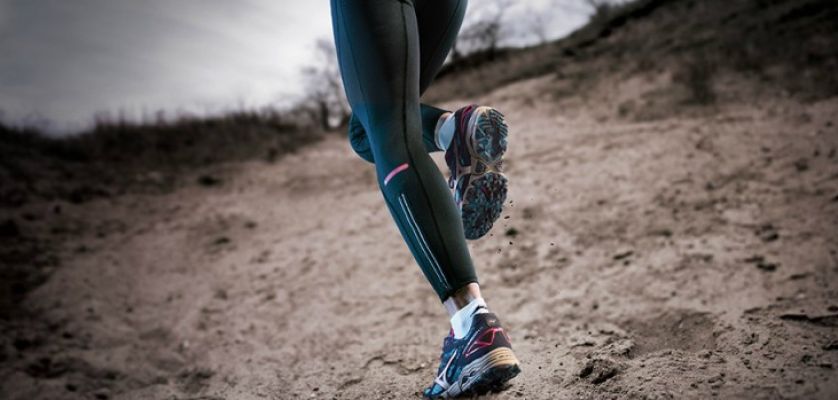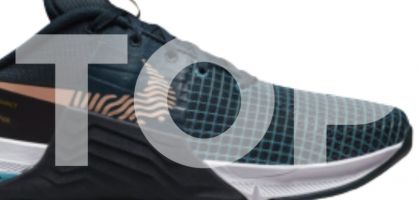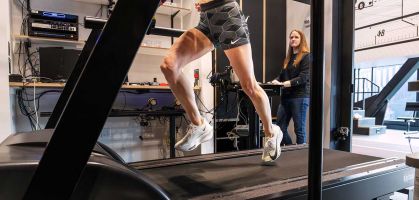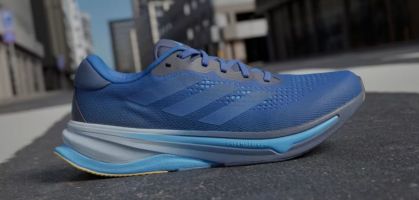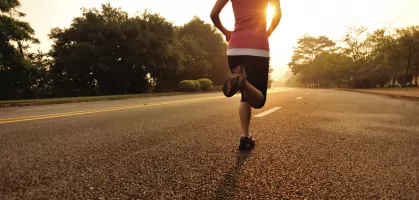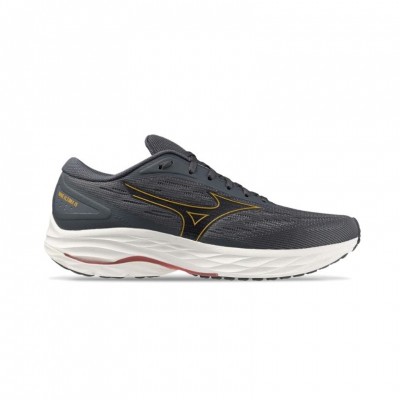Among the many choices of Running shoes offered by sports stores, finding the footwear that best suits your requirements and needs is not always an easy task. To make sure your feet won't suffer from your bad choice, it's important to know some facts about the details you need to check to know that the shoes fit correctly from heel to toe.
Listen to #podcast: Guide to not messing up with your sneaker choice
We've set out to help you when it comes time to buy a running shoe. I want you to know the most common mistakes when choosing a running shoe. To do so, I've enlisted the help of two specialists, owners of running stores - each of whom has advised miles runners - and they've shared some of their secrets with us.
Heel
The heel should be snug, but not tight, says Carl Brandt, meaning you should be able to slide your feet out when the shoe is not laced. Tying the sneakers through the last hole will minimize slippage. There will be some heel movement, but it should not be uncomfortable. Any irritation felt in the store, Brandt adds, will be amplified once you get out for a run.
Instep
A running shoe's upper, or upper, should fit properly without you noticing any chafing on the instep, Brandt explains. "When people tell me they feel pressure and tightness, it's a sign they need more room." If a shoe that looks great has hot spots or pressure under the laces, you can try lacing it in a different way before switching to another type of shoe.
Width
The foot should be able to move side to side in the front of the shoe without crossing over the edge of the insole, James says. You should be able to pinch a centimeter of the upper material at the widest part of your foot.
- One trick: If the shoe is too narrow, you'll feel the base of the little toe resting on the edge of the shoe last.
Length
Feet swell and elongate when you run, so you need to make sure there is a space the width of your thumb, between your longest toe (which is not always the big toe) and the end of the shoe. Ask a friend or the salesperson at the store for help and always tie the shoe. Toes should also move freely up and down, explains Chet James. The room to wiggle the toes protects them from problems that could arise in the forefoot.
Flexion
Check the flex point before putting on the shoe, suggests Carl Brandt. You can do this by holding the heel and pressing the toe of the shoe against the ground. The shoe should bend and the crease should form along the same line where your foot flexes. An incorrectly aligned flex point can lead to arch pain or plantar fasciitis, while lack of flexibility leads to Achilles tendon injury or calf strain.
Feelings
It is not enough to know your arch type or the shape of your footprint. You need to clearly establish the shoes that match the contours and movements of your foot. You can't get a good feel by standing still, says James. So it's important to put on your sneakers and run around a bit, whether it's on a treadmill in a store or down an aisle. A natural feeling of arch support is what works for most people, James says. "Reduce the amount of support if you feel cramping in the arch of your foot." The shoe should complement and support every step, don't try to alter it.

Mistakes you shouldn't make when shopping for running shoes.
Running shoes store employees see runners make the same mistakes over and over again when they come to buy shoes. But, it won't happen to you anymore (and less so after reading this article), thanks to the advice we're going to give you. Take note and don't make these mistakes:
Mistake #1: Buying according to design or fashion.
"Some runners care too much about fashion, so specialists try to steer people away from that, when they buy a shoe that only looks good, they end up coming back in a couple of months, saying, "This shoe is causing me discomfort or pain, I've had problems with it." When buying, you should be thinking about fit and how they feel when you put them on, not fashion trends. " - Bryan Mahon, Philadelphia Runner.
Mistake 2: Not asking for discount or offers.
"When you're ready to pay, ask if there are discounts available for runners who are members of any clubs. And if you do it online, go to a price comparison site like RUNNEA.COM ;) that's why we made this post, hehehe....
Mistake # 3: Buying shoes too small to find a unique price
"Sneakers that are too tight on you will undoubtedly lead to blisters and black toenails or those kinds of problems. Women in particular are used to wearing shoes that are too tight, as they are often more conscious about the size of their feet.
A trick: Play the piano with your toes" this means that the fit should be wide enough in the front of the foot.
Mistake #4: Buying at the wrong time of day.
"A lot of times people come in in the morning and say, 'This is the sneaker I need.' Then they come back the next day and say, 'I wore them at 5 p.m. and I notice they're small.' Your feet start swelling in the morning and don't stop until 4:00 p.m. they reach their largest size, so it's always advisable to buy shoes in the evening."
Mistake 5: Assuming size
"People assume that a size is a standardized size, that an 8 USA in a Nike will be the same as an 8 USA in a New Balance, but the sizes are different due to different lasts, different upper designs and the way the shoe is stitched. Measure your feet every time you buy a sneaker, and always try the shoe on for a perfect fit and to be sure you get the exact size."
There is no such thing as "the best shoe ever" every runner has different needs. Many things will influence the shoe to suit your requirements - your biomechanics, weight, the surfaces you run on, and, obviously, the shape of your feet - all of which means that one person's ideal shoe may be terrible for another.
- Here's a tip: Check out our sizing guide by brand here .
One extra thing to keep in mind.
You may come across four main categories (stability, performance, neutral and minimalist) when approaching a running store or doing further research on the topic of running shoes.
- Stability:
are recommended for runners who are over pronators (medium to moderate), or who have normal or low arches. These runners tend to need a model with a combination of good support and extra cushioning in the midsole.
- Performance/speed:
They are recommended for racing, and if the runner is biomechanically efficient, they can use them for quality workouts (sets, tempo changes). These shoes have varying degrees of support and cushioning, are generally lighter and narrower than other running shoes.
- Neutral:
Recommended for runners who need maximum cushioning and support in the midsole, and minimal mid support. These shoes are best for biomechanically efficient runners (with minimal pronation) who strike against the ground with the midfoot and forefoot, with high or normal arches.
- Minimalist:
Recommended for biomechanically efficient runners who want maximum responsiveness and a minimized shoe while retaining certain cushioning elements.
In Summary
Most running shoes feel comfortable when you're standing in a running store, but the real test comes after several miles, on the run or training. You'll soon realize that the ideal running shoe relates more to your running style and the shape of your foot than the logo stitched on the side. Choosing the best shoes is possible:
Always keep in mind the tips the experts have shared in this article!
Read more news about: Running News
